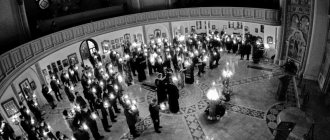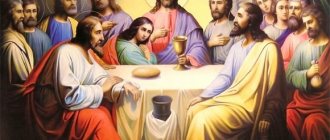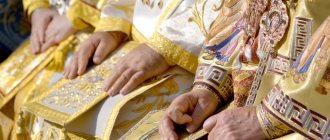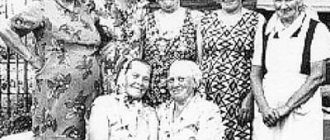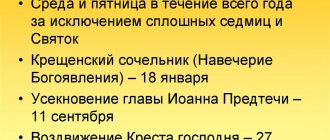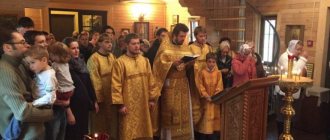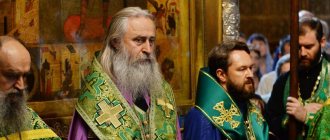The removal of the shroud on Good Friday takes place at the third hour of the day, at the hour of the death of Jesus Christ on the cross.
Good or Good Friday is the most mournful Christian date for every year (in 2022 it falls on April 26) for more than two thousand years. It was on this day that the crucifixion of the Savior of mankind, Jesus Christ, took place. On this day, until the Shroud is taken out of the altar, all Christian believers are forbidden to have fun, as well as eat and wash. After the Shroud is laid in the temple, fasting people are allowed to drink water and bread in small quantities.
What is Good Friday? This is a worship service in a special order. All churches recount the tragic events and passions that the Savior experienced on this day. Priests all over the world read the Gospel narratives, which are read three times:
- at morning
- on the Great Clock,
- at Great Vespers.
On Good Friday in 2022 (April 26), as in other years, believers around the world pray for the forgiveness of the Lord, thank Jesus for his feat, with which he atoned for the many sins of mankind, and mourn that the human soul can be so dark that once allowed the brightest to die.
Here you will learn:
What is the removal of the Shroud
The term “shroud” appeared in Russian liturgical books at the end of the 16th century. The Shroud is an icon depicting the Savior lying in the tomb. Usually this is a large cloth (piece of fabric) on which the image of the Savior laid in the tomb is written or embroidered. The removal of the Shroud and the Rite of Burial are two of the most important services that take place on Good Friday of Holy Week. Good Friday is the most mournful day in the church calendar for Christians around the world. On this day we remember the suffering of the Cross and the death of Jesus Christ.
Matins - details of the service
The worship service, which took place in Jerusalem in ancient times, lasted all night. Starting on Thursday and ending on Friday. That night, all the believers, led by the bishop, visited the places where the tragic acts of that time took place. This is the arrest, the Last Judgment, death on the cross and burial of Jesus Christ. Each of the above places has its own passage of the Gospel. The order of reading the Gospel passages has been preserved to this day.
More on ShumCity.Ru:
Eurovision 2020 when will it take place, who will go from Russia and when is the selection
At the beginning of Matins, funeral troparia are sung, the 19th and 20th psalms are read, then the reading of the sixth psalm begins.
In between readings of the Gospel, the servants sing stichera and antiphons, which indicate the ungrateful act of Judas, which doomed the Savior to death.
Liturgical features of the burial rite
Matins of Great Saturday with the Rite of Burial is usually served on Friday evening . The shroud in this service is given the role that in other cases the icon of the holiday has.
Matins begins as a funeral service. Funeral troparia are sung and incense is performed. After the singing of the 118th Psalm and the glorification of the Holy Trinity, the temple is illuminated, then the news of the myrrh-bearing women who came to the tomb is proclaimed. This is the first, quiet for now, because the Savior is still in the tomb - the good news of the Resurrection of Christ.
During the service, believers make a procession of the cross - they carry the Shroud around the temple and sing “Holy God.” The religious procession is accompanied by the ringing of funeral bells.
At the end of the burial ceremony, the Shroud is brought to the royal doors, and then returned to its place in the middle of the temple so that all the clergy and parishioners can bow to it. There she remains until late evening on Holy Saturday.
Only before Easter Matins, during the Midnight Office, is the Shroud taken to the altar and placed on the throne, where it remains until Easter is celebrated.
Great (Royal) Clock
The service on Great Friday is different in that the liturgy is not read. The days on which the great holiday of the Annunciation falls are subject to an exception to this rule. The reading of the Royal Hours is characterized by one feature: the 1st, 3rd, 6th and 9th hours are combined, in each of which the reading of the proverb, the Apostle and the Gospel is carried out. The narratives written by each of the four evangelists are read separately. A similar service is also held on Christmas Eves of the Nativity of Christ and Epiphany.
It has become customary to call it a royal clock since the time of the Moscow tsars, since their participation in the service was mandatory.
Iconography of the Shroud
The Shroud is a plate on which the Savior is depicted lying in the tomb. This icon (the Shroud is considered an icon) has traditional iconography.
In the central part of the composition of the Shroud the icon “Position in the Tomb” is depicted. The entire body or just the body of the buried Christ.
The “Position in the Tomb” icon describes the gospel scene of the burial of the crucified Jesus Christ. The body was taken from the cross and wrapped in a shroud, that is, burial shrouds soaked in incense. Then the Savior was placed in a coffin carved into the rock, and a large stone was rolled at the entrance to the cave.
The shroud is made using different techniques. Most often, velvet fabric is used as a basis. For example, Shrouds of the XV-XVII centuries. were made using the facial sewing technique. In the XVIII-XIX centuries. craftsmen combined gold embroidery or relief applique of fabrics with painting. The face and body of Christ were painted using painting techniques. There were also completely picturesque Shrouds.
Nowadays you can often see Shrouds made using typographic methods in churches. These are the costs of mass production - handmade is expensive.
Along the perimeter of the Shroud, the text of the troparion of Great Saturday is usually embroidered or written: “The noble Joseph took down Your most pure body from the tree, wrapped it in a clean shroud and covered it with odors (option: fragrant scents) in a new tomb, and laid it.”
Why is Friday called Good Friday?
The events of Good Friday will become clear if we rewind time just one day back and plunge into the atmosphere of Thursday (the same Thursday that people called Clean Thursday).
Let us mentally imagine the Lord's Supper - a kind of farewell evening, which became the last for Christ and his disciples. Of course, none of the 12 apostles had any idea that Jesus would be taken into custody a few hours later.
And only Judas Iscariot was aware of what was happening, because the traitor had already begun his vile game. Having reached an agreement with the Savior’s enemies, he literally sold his teacher for 30 pieces of silver.
By the way, today scientists have made simple calculations that have revealed an amazing fact. Those 30 pieces of silver are today's 6 thousand dollars. This is the amount Judas valued the Lord’s life at.
Of course, Christ knew about the upcoming torment, because he came to earth in order to die and then be resurrected. Through his atoning sacrifice, the Lord was to save all mankind. But did he know in detail what would happen in a few hours? Hardly.
Therefore, immediately after the supper, he went to the Garden of Gethsemane to retire and mentally prepare for the most difficult test. This is what this place looks like today (Jerusalem, Israel).
Meanwhile, Judas was already with his accomplices. The remaining 11 disciples settled down not far from the Savior. Thursday turned out to be a very busy day, so they fell asleep very quickly: clean air, sweet silence and sentimental moonlight did their job.
But Christ had no time for sleep. The moment of his suffering and passion is described in great detail in the Bible.
The Savior turned his gaze to heaven and simply prayed to God.
Perhaps everyone has heard the expression “the passion of Christ.” This is not only the name of a famous film, but also part of the true biography of the Savior - the events of the last days of his earthly life. Of course, at that moment he was experiencing not carnal, but spiritual passions.
This is what we sometimes call the words “the soul hurts.” Painful thoughts, a feeling of the inevitability of suffering and a terrible, unjust death. Needless to say, in this mental struggle a person especially needs the support of his loved ones - at least a warm word and a kind look.
Obviously, this is exactly what the Lord wanted when he approached his disciples. But they were already fast asleep. Christ did not wake them up, did not ask for help, although, of course, he had every right to do so. It’s just that this was not part of his mission - the Savior does not share his suffering, but bears his cross to the end.
A few hours later he will literally carry a huge wooden cross. Together with a raging crowd, representatives of the authorities and a small number of sympathizing people, the Lord reached a place called Golgotha... (Gospel of Matthew, chapter 27).
This is what it looks like today (Jerusalem, Israel).
Screaming enemies, laughing soldiers, whispering conspirators - their discordant cries turned into disgusting chaos, which reverberated with a dull, sad noise in the ears of all those gathered. No one thought about what would happen in just a few minutes. The Lord dies in torment and struggle.
At that very second, the unexpected happened. The sky became dark as if night had suddenly fallen or a total solar eclipse. The stones at the foot of the cross cracked, and the curtain in the local temple was torn exactly in half.
The crowd was seriously scared. Those who just recently shouted and mocked the defenseless man hurried to go home.
And many soldiers, timid people, felt not only trembling fear, but also deep respect for the deceased. They believed that Christ was truly the Son of God.
A few more hours later, when Golgotha was deserted, one rich man, whose name was Joseph, came to the cross with the body of Jesus (whether it’s a coincidence or not, but the same name was given to the Savior’s earthly father, Mary’s husband). He removed the body, embalmed it, swaddled it and performed the burial ceremony (placed it in a stone tomb).
The next day, the traitors were afraid of the already dead Christ, because they remembered his promise that in three days he would rise again. Therefore, they decided to move a heavy stone to the entrance to the tomb, put a seal on it, and in addition set up a guard who should stand at his post around the clock.
No, those people did not know that no security could disrupt God’s plans, because Christ’s mission would be completed only when he was resurrected. So, all that remains is to wait for the fulfillment of this promise. And this was exactly the case when the promised one waits not for three years, but for three days.
After all, on Sunday a great miracle will happen, which a good half of humanity still remembers today. We call it Bright Easter - a holiday of hope and good changes, the victory of life over death, spring over winter, the forces of light over the forces of darkness.
But the other hero of this story faced real death, without the prospect of resurrection. Judas Iscariot never got to enjoy his $6,000. After the death of Christ, he was terribly afraid for his transgression, realizing that he had done something terrible.
Taking a wallet with 30 ill-fated pieces of silver, the traitor went to the conspirators to return the money to them. But the life of the innocently murdered man could not be returned. And the attackers had nothing to do with these bloody coins.
Judas became confused and threw the money right in the temple. The silver coins rolled across the floor, jingling and bouncing alarmingly. This ominous sound seemed to foreshadow an imminent tragedy. Iscariot ran from the city and hanged himself on the first tree he came across.
The legend says that at first he wanted to hang himself on a birch tree, but it got scared and turned white with fear. Then the traitor committed suicide on an aspen tree. Since then, the aspen bush has been trembling in the wind more than others - apparently, it never recovered from what happened...
From this short story it becomes clear that such an event is a real dramatic story, and Good Friday is called so for a reason. By the way, all the days of the last week before Easter are called passionate (just like the week itself), for example: Holy Thursday (aka Maundy), Good Friday, Holy Saturday, etc.
It is also customary to call days great, because they are the most significant and revered in Christianity. Thus, Good Friday is, without exaggeration, a great, dramatic day, which even today requires a special attitude and respect from us.
Traditions of removing the Shroud
In some churches, after the religious procession, the clergy carrying the Shroud stop at the entrance to the temple and raise the Shroud high. And the believers following them, one after another, go to the temple under the Shroud. A small liturgical cover is usually placed in the middle of the shroud, along with the Gospel. Sometimes the face of Christ depicted on the Shroud is covered with a shroud - in imitation of the rite of priestly burial, which prescribes covering the face of the clergyman lying in the coffin with air (air is a large quadrangular cover that symbolically depicts the shroud with which the body of Christ was entwined).
